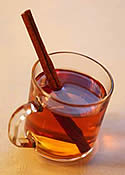Spices and Herbs

Spices
Spices and herbs are defined as plant derived substances that add flavor to any dish. It is difficult to distinguish between the two. Spices can come from the following plant parts: roots, rhizomes, stems, leaves, bark, flowers, fruits, and seeds. Herbs are typically thought of as non-woody plants.
It is not known when humans began to use the first herbs and spices as flavoring agents. Garlic and onions were documented as being used 4,500 years before present. Humans used spices to help preserve foods before refrigeration. Both were also used in religious ceremonies.
Spices and herbs have historical importance and were once the source of great power and wealth. Arab traders established early spice trading routes. The Greeks expanded the trade routes to the Mediterranean. The Roman Empire had great control and power with the spice trade. Seafaring nations like Portugal, Spain, Holland, and Britain entered the lucrative spice trade and fought many wars to retain power. As plantations of pepper, nutmeg, cinnamon, and other important spices were established on tropical islands, the spice monopolies were disbanded.
Spices can come from all plant parts. The following lists the part of the plant that is the source of your favorite spice.
Common Spices Derived from Seeds
- Allspice
- Angelica
- Anise
- Annatto
- Black Cumin
- Black pepper
- Brown mustard
- Caraway
- Cardamom
- Cayenne pepper
- Celery seed
- Coriander
- Cumin
- Dill
- Fennel
- Fenugreek
- Juniper berries
- Lovage
- Mace
- Mustard
- Myrtle
- Nutmeg
- Paprika
- Pepper
- Pimento
- Sichuan pepper
- Star anise
- Tabasco pepper
- Tamarind
- Vanilla
- White mustard
- White pepper
Common Spices Derived from Roots, Stems, Bark, Leaves, or Flowers
- Absinthe
- Allspice
- Balm
- Basil
- Bay leaf
- Buchu
- Capers
- Celery
- Cinnamon
- Chamomile
- Chinese keys
- Cloves
- Curry leaf
- Fennel
- Field mint
- French tarragon
- Garden nasturtium
- Ginger
- Hops
- Horseradish
- Hyssop
- Lemon verbena
- Lemongrass
- Licorice
- Makrut lime
- Mint
- Oregano
- Peppermint
- Rue
- Saffron
- Sage
- Spearmint
- Turmeric
- Wasabi
- Wormwood
- Zedoary
New World Spices
The new world has contributed only three significant spices: allspice, capsicum peppers, and vanilla. Allspice was among one of the few spice treasures presented by Columbus to the court of his sponsors.
Vanilla is from one of the largest flowering plant families, the orchid family. The fruit is responsible for the flavoring. Vanilla extract is made by chopping fermented beans and continually percolating an ethanol-water mixture over them to dissolve out the vanillin.
Spicy Fun Facts

- Black pepper once served as currency to pay salaries and bribes
- You can eat the flowers of garden nasturtium, very spicy but good!
- Cinnamon sticks are actually bark.
- Why is saffron the most costly of all herbs and spices? The reason for its high price is based upon the fact that saffron comes from the stigmas of a crocus, Crocus sativus. No other part of the plant is used.
Culinary Herbs
Culinary herbs are used to enhance the flavor of dishes. Many of the flavorful herbs are in the mint family and the carrot family. Both of these families have the presence of volatile oils that are formed in specialized glands or ducts in the leaves and fruits.
Native North American plants that have been used as culinary herbs include:
- Wild mint
- Horsemint
- Loveroot
- California bay
- Tarragon
- Sagebrush
- Juniper
- Wild onion
For More Information
- Spices: Exotic Flavors and Medicines - History & Special Collections, UCLA Louise M. Darling Biomedical Library
- Gernot Katzer’s Spice Pages



